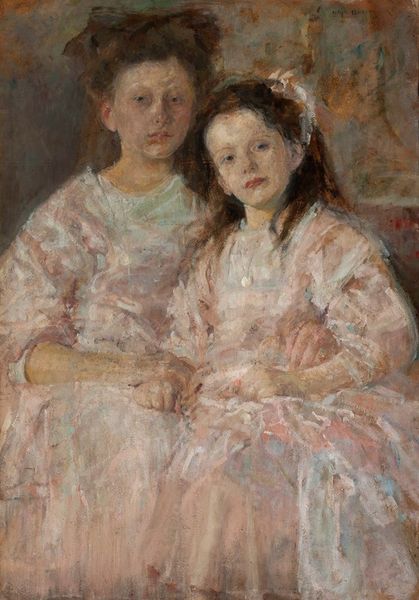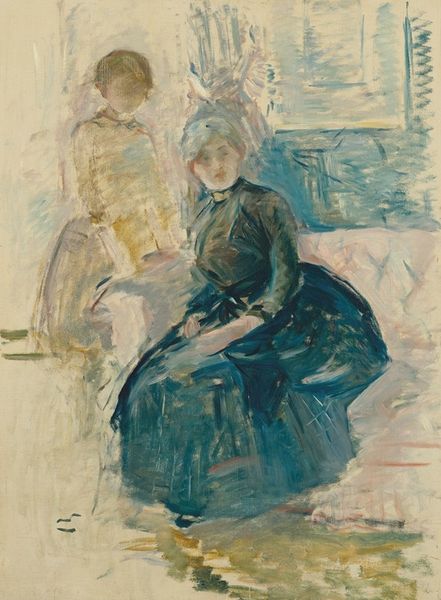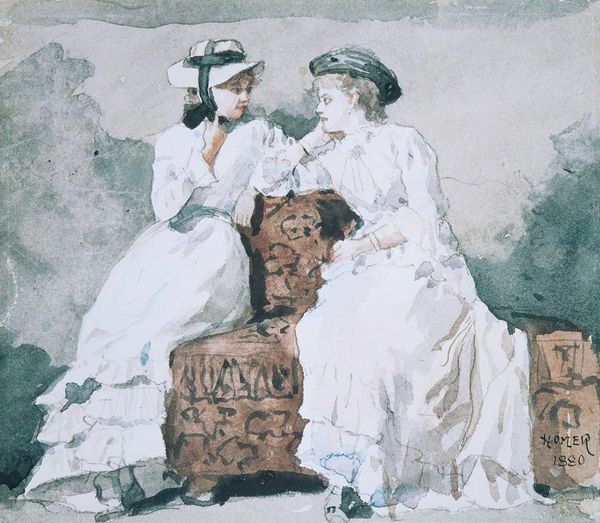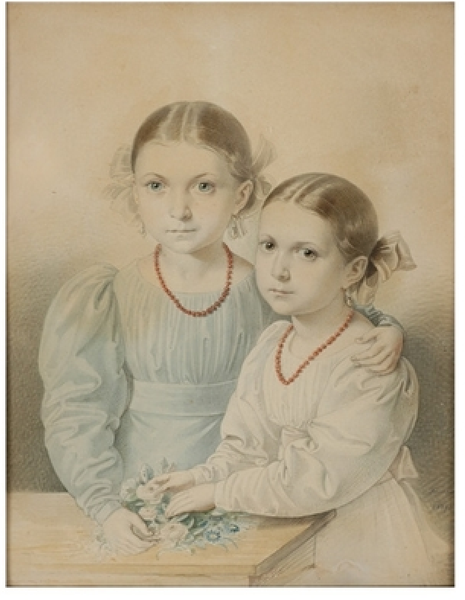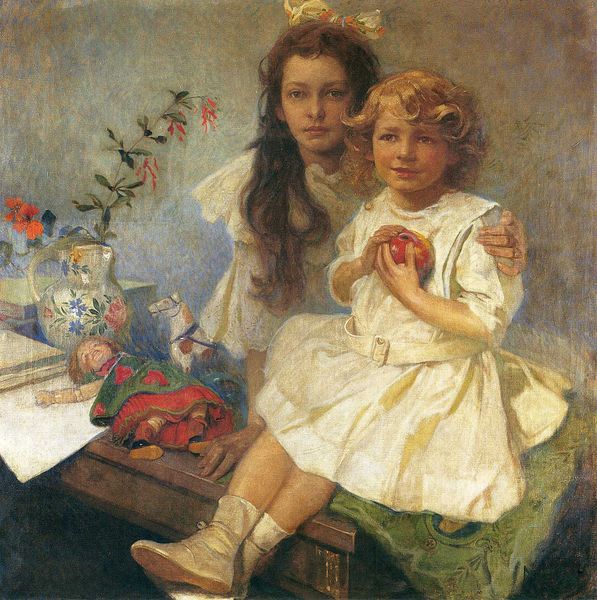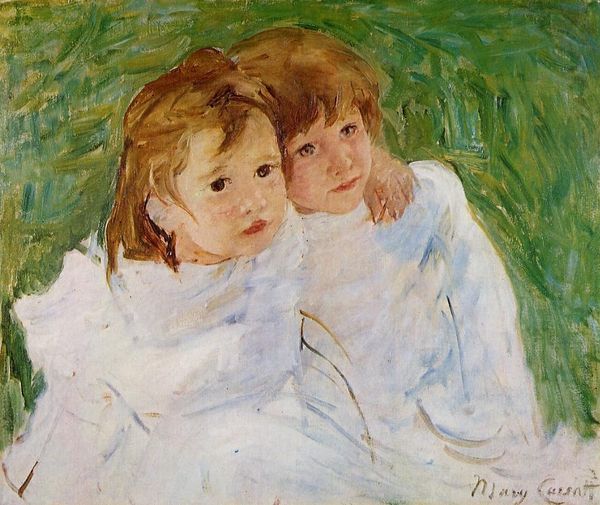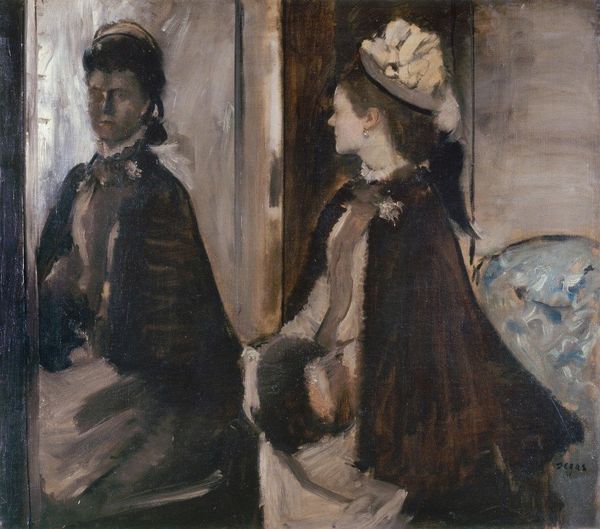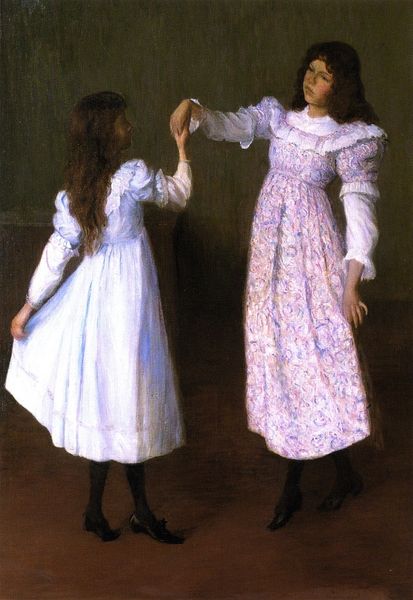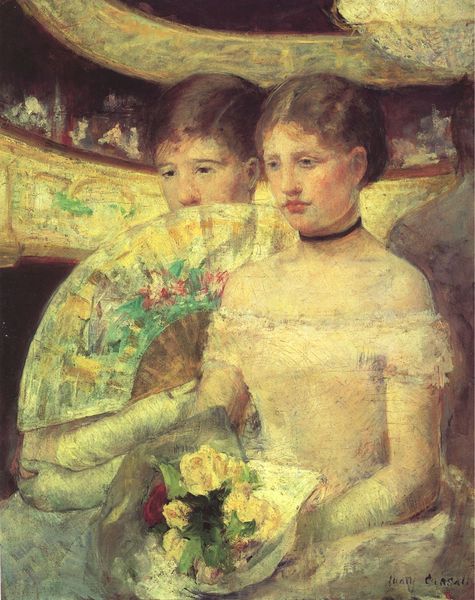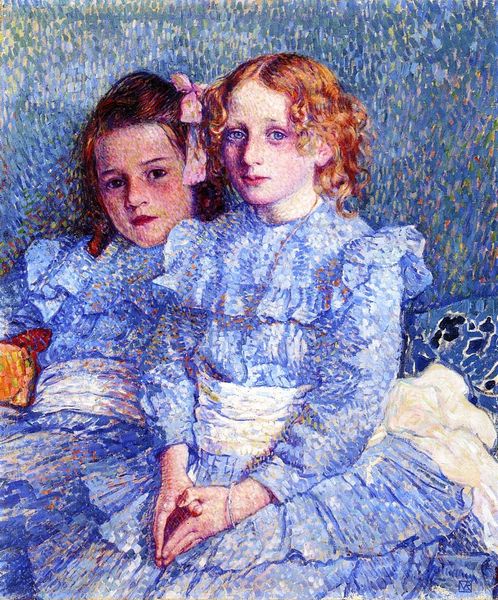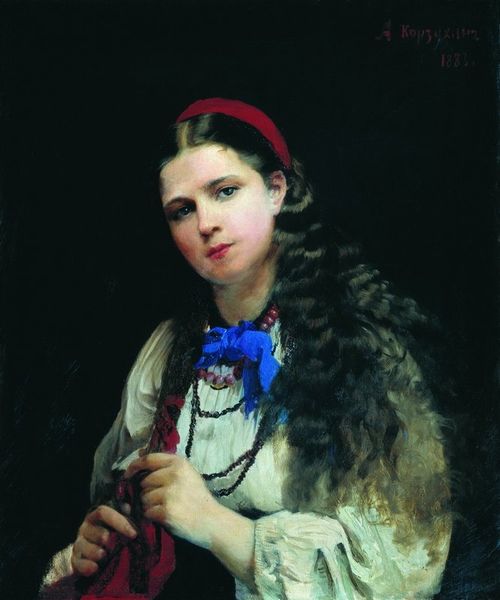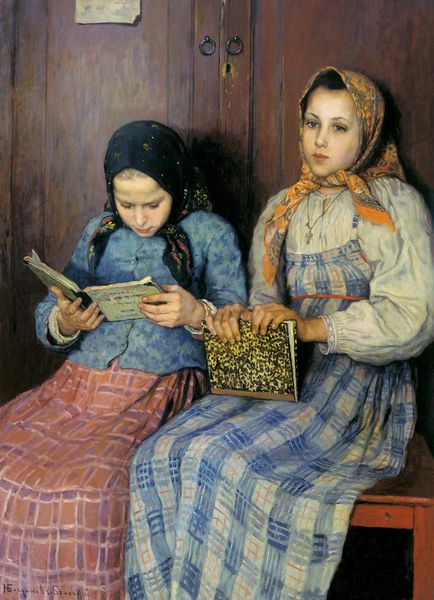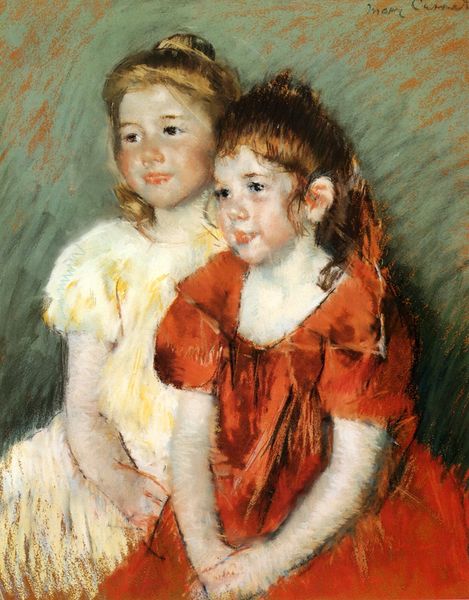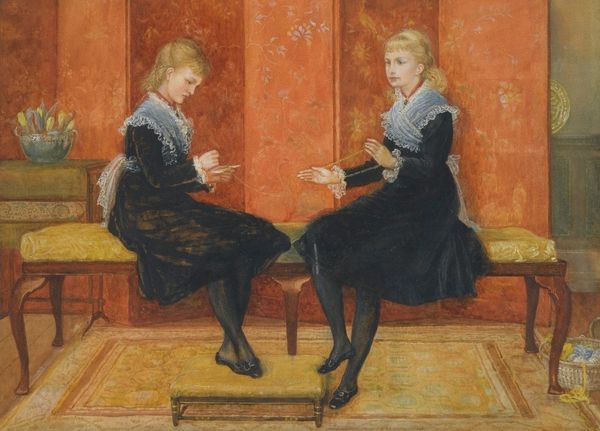
Copyright: Public Domain: Artvee
Anton Romako painted "The Artist's Nieces, Elisabeth and Maja," in Austria, though the specific date is unknown. The image presents these young women in a manner that reflects both the period's aesthetic tastes and its social dynamics. Romako lived in a time when artistic patronage was shifting from aristocratic circles to a rising bourgeoisie, and portraiture played a crucial role in defining status. How does he represent the emerging middle class? The girls are dressed respectably but without excessive adornment, reflecting middle-class values. In the context of 19th-century Austria, where social identity was often performed through dress and presentation, such details carry significant meaning. The painting thus offers insights into the evolving social structures of its time. To fully appreciate the social context of Romako's work, scholars might consult period fashion plates, conduct archival research into the Romako family’s social standing, and examine exhibition records to understand how the painting was initially received. Art is contingent on social and institutional context.
Comments
No comments
Be the first to comment and join the conversation on the ultimate creative platform.
